Mysterious Lost Kingdom Of Urartu And Its Enigmatic History
A. Sutherland - AncientPages.com - The lost kingdom of Urartu is shrouded in mystery because very little is known about this ancient place and the origin of its people.
The capital of Urartu was the rock fortess Tushpa. Credit: Adobe Stock - Koraysa
Still today, archaeologists look for more traces of the mysteriously lost kingdom of Urartu, as the Assyrians called it. The Hebrews referred to it as Ararat, and in more modern times, it has been named the Kingdom of Van.
The kingdom's beginnings are lost in the mists of pre-history. Still, Urartu was situated near Lake Van and the mountainous plateau between Anatolia, Mesopotamia, the Iranian Plateau, and the Caucasus Mountains before it was destroyed. The earliest documents mention the land of Urartu can be found in Assyrian sources. This Iron Age kingdom was established around the mid-ninth century BC and conquered by the ancient Iranian people of Medes in the early 6th century BC.
Based on what we know, the people of Urartu were famous metalworkers and spoke a language related to Hurrian (a language with no other known connections). They adapted the Assyrian cuneiform script for their purposes.
Although it cannot be said with certainty, Urartu was ruled by a single dynasty from the ninth century, expanding three kingdoms to the south when Assyria was weak.
Two of the Urartian gods holding an unknown object. The plates were decorations for other items and were found at Rusahinili, an ancient Urartian fortress in Turkey. Credit: Credit: Dosseman - CC BY-SA 4.0
The true origin of the people of Urartu has yet to be discovered. Some historians think these people migrated from somewhere to the west into the Armenian plateau, then, for the most part, known as Nairi. They called themselves Khaldians or children of the god Khaldis, just as the name of the Assyrians reflects the name of their god Assur.
In 1939, Professor Shestokov, a Soviet Russian historian, wrote that the oldest states of the Soviet Union were founded 3,000 years ago to the south of Transcaucasia. The oldest among them was called Urartu. Its kings ruled over Georgian tribes.
In 1827, German scholar Friedrich Eduard Schulz first attempted to study the ancient ruins. Schulz made copies of several inscriptions and had these sent back to Paris.
Unfortunately, Schulz and his party were attacked by bandits in Kurdistan and killed in 1829.
The copies were not published until 1840 in Paris, where there were shown to be various inscriptions in Ancient Persian and Assyrian cuneiform, itself not fully translated, while the rest of the inscriptions were in an unknown language.
Left: Bronze figurine of the winged goddess Tushpuea, with suspension hook. Credit: Evgeny Genkin - CC BY 2.5 Right: Bell inscribed with the Urartian royal name Argishti, 786–756 b.c. Credit: Zunkir - CC BY-SA 4.0
In 1847 and 1850, new copies were taken of the inscriptions. Several attempts have been made to decipher the cuneiform inscriptions of Armenia through the present-day Armenian language.
The failure of these attempts has led some to believe that the inscriptions must be in some unknown, alien tongue, neither Indo-European nor Semitic.
Sooner or later, everything must end, and so the existence of the Kingdom of Urartu. The fall of the Kingdom of Urartu is shrouded in darkness. The kingdom succumbed in around 585 - 590 BCE. However, there is no written account of this event, and this timescale is not undisputed.
Archaeologist Boris Piotrovsky, who headed the excavation of Teishebaini, now Karmir Blur in modern Armenia, discovered remains of a city besieged and consumed in a great conflagration during a final night attack. He also uncovered several treasures and everyday artifacts taken to the citadel when the town was attacked.
Reconstruction of an Urartian tripod stand used for burning incense and for illumination decorated with lions made of ivory, 8th century BC, from Altintepe, Museum of Anatolian Civilizations, Ankara. Credit: Carole Raddato - CC BY-SA 2.0
The people of Urartu knew their kingdom was about to vanish and made a last attempt to hide some precious objects, hoping they would survive as a reminder of the kingdom's existence.
Unfortunately, many artifacts, including most inscribed objects, have not been excavated. Only a few (such as the cemetery at Altintepe) have been properly excavated.
It means that archaeologists have been deprived of complete and contextual knowledge of the culture, and precious history has been lost again.
For example, many Urartian cemeteries with hundreds of burial goods have been robbed.
This brilliant era of Urartu did not last long, and the kingdom disappeared rapidly from history.
Updated on July 14, 2023.
Written by – A. Sutherland AncientPages.com Staff Writer
Copyright © AncientPages.com All rights reserved. This material may not be published, broadcast, rewritten or redistributed in whole or part without the express written permission of AncientPages.com
Expand for references
References:
Armen Asher, Teryl M. Asher, The Peoples of Ararat
Lardinois R. Scholars and Prophets: Sociology of India from France in the 19th-20th Centuries
More From Ancient Pages
-
 Extraordinary Discovery Of First Viking Tower In Viborg, Denmark Re-Writes Viking History
Archaeology | Jan 30, 2017
Extraordinary Discovery Of First Viking Tower In Viborg, Denmark Re-Writes Viking History
Archaeology | Jan 30, 2017 -
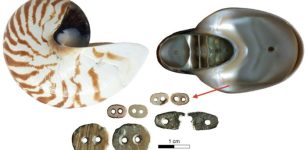 Sea Sequin ‘Bling’ Links Indonesian Islands’ Ancient Communities
Archaeology | Aug 16, 2023
Sea Sequin ‘Bling’ Links Indonesian Islands’ Ancient Communities
Archaeology | Aug 16, 2023 -
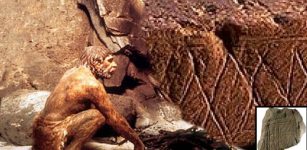 Skilled Neanderthal Hand Engraved Ancient Stone And Hashtag Symbol
Archaeology | May 7, 2018
Skilled Neanderthal Hand Engraved Ancient Stone And Hashtag Symbol
Archaeology | May 7, 2018 -
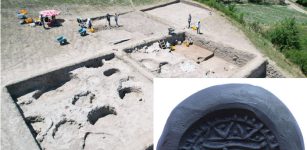 3,300-Year-Old Mycenaean-Like Seal And Dagger Discovered In Turkey
Archaeology | Jul 22, 2022
3,300-Year-Old Mycenaean-Like Seal And Dagger Discovered In Turkey
Archaeology | Jul 22, 2022 -
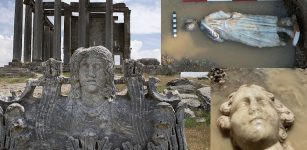 More Greek Gods’ Heads And A Life-Sized Statue Of A Man Unearthed In The Ancient City Of Aizanoi
Archaeology | Dec 28, 2022
More Greek Gods’ Heads And A Life-Sized Statue Of A Man Unearthed In The Ancient City Of Aizanoi
Archaeology | Dec 28, 2022 -
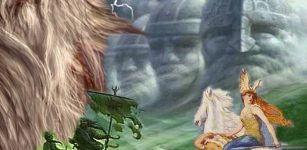 Valhalla – The Hall Of The Fallen Where Viking Hero Warriors ‘Einherjar’ Dwell After Death
Featured Stories | Mar 11, 2018
Valhalla – The Hall Of The Fallen Where Viking Hero Warriors ‘Einherjar’ Dwell After Death
Featured Stories | Mar 11, 2018 -
 Camas Plant Stewardship In The Pacific Northwest Dates Back More Than 3,500 Years
Archaeology | May 23, 2024
Camas Plant Stewardship In The Pacific Northwest Dates Back More Than 3,500 Years
Archaeology | May 23, 2024 -
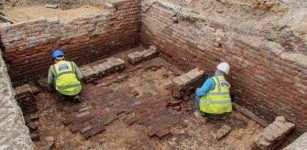 London’s Oldest Theater Red Lion Discovered Beneath Whitechapel
Archaeology | Jun 10, 2020
London’s Oldest Theater Red Lion Discovered Beneath Whitechapel
Archaeology | Jun 10, 2020 -
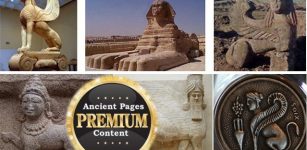 Mystery Of The Sphinx – A Guardian Of Knowledge And Symbol Of Riddles And Intrigue
Ancient Mysteries | Oct 13, 2015
Mystery Of The Sphinx – A Guardian Of Knowledge And Symbol Of Riddles And Intrigue
Ancient Mysteries | Oct 13, 2015 -
 Powerful Thunderbird Sent By The Gods To Protect Humans From Evil In Native American Legends
Native American Mythology | Mar 26, 2017
Powerful Thunderbird Sent By The Gods To Protect Humans From Evil In Native American Legends
Native American Mythology | Mar 26, 2017 -
 Mysterious Ancient “Fish People” – Who Were They And How Did They ‘Change’ Civilizations Worldwide?
Ancient Mysteries | Dec 20, 2021
Mysterious Ancient “Fish People” – Who Were They And How Did They ‘Change’ Civilizations Worldwide?
Ancient Mysteries | Dec 20, 2021 -
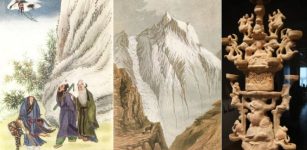 Kunlun Mountain – Mythical Dwelling Place Of Gods, Sacred Animals And Symbol Of Axis Mundi In Chinese Mythology
Chinese Mythology | Jan 31, 2019
Kunlun Mountain – Mythical Dwelling Place Of Gods, Sacred Animals And Symbol Of Axis Mundi In Chinese Mythology
Chinese Mythology | Jan 31, 2019 -
 Hero Stones Belonging to Pallava Era Found Near Tirupattur, India
Archaeology | Oct 15, 2015
Hero Stones Belonging to Pallava Era Found Near Tirupattur, India
Archaeology | Oct 15, 2015 -
 Lilith – Beautiful Demonic And Brave Symbol Of Equality And Adam’s First Wife Who Refused Subordination
Biblical Mysteries | May 24, 2020
Lilith – Beautiful Demonic And Brave Symbol Of Equality And Adam’s First Wife Who Refused Subordination
Biblical Mysteries | May 24, 2020 -
 Why Were Ancient And Medieval People Horrified Of The Night?
Featured Stories | Nov 11, 2024
Why Were Ancient And Medieval People Horrified Of The Night?
Featured Stories | Nov 11, 2024 -
 Skull Of Mysterious, Extinct Cousin Of Neanderthals Recreated From A Fossilized Finger
Archaeology | Sep 19, 2019
Skull Of Mysterious, Extinct Cousin Of Neanderthals Recreated From A Fossilized Finger
Archaeology | Sep 19, 2019 -
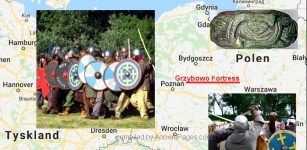 Medieval Ring Found In Piast Stronghold Near Gniezno, Poland – Is A Unique Christian Artifact
Archaeology | Nov 28, 2019
Medieval Ring Found In Piast Stronghold Near Gniezno, Poland – Is A Unique Christian Artifact
Archaeology | Nov 28, 2019 -
 England’s Oldest Bible Reveals Surprising Hidden Secrets
Biblical Mysteries | Mar 19, 2016
England’s Oldest Bible Reveals Surprising Hidden Secrets
Biblical Mysteries | Mar 19, 2016 -
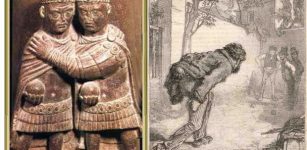 Ancient Egyptians Played Bowling 5,000 Years Ago
Ancient History Facts | Feb 22, 2016
Ancient Egyptians Played Bowling 5,000 Years Ago
Ancient History Facts | Feb 22, 2016 -
 Enigma Of Lycurgus Of Sparta – Great Reformer And His Foundation Of A Warlike Superior State
Featured Stories | Jan 9, 2023
Enigma Of Lycurgus Of Sparta – Great Reformer And His Foundation Of A Warlike Superior State
Featured Stories | Jan 9, 2023




